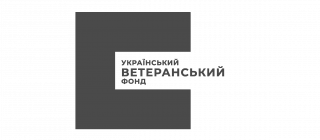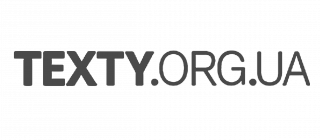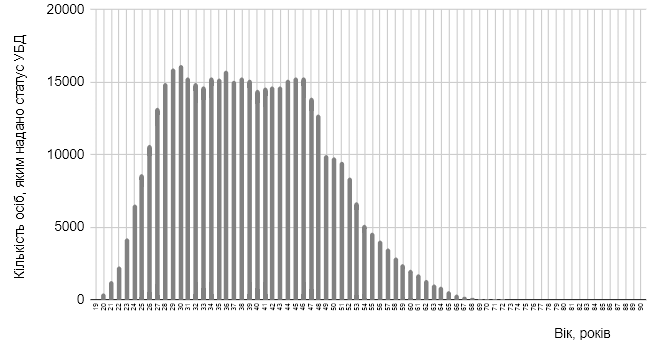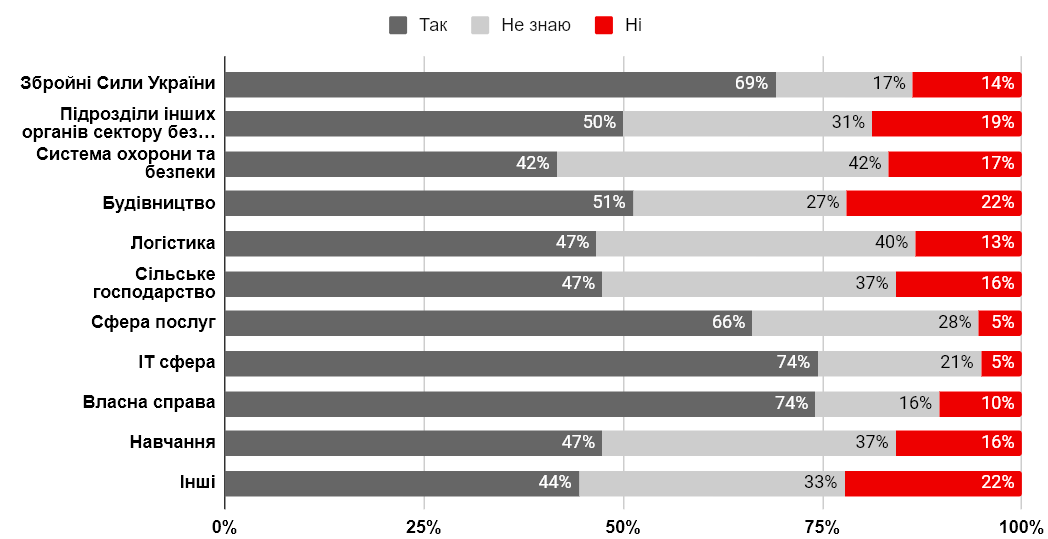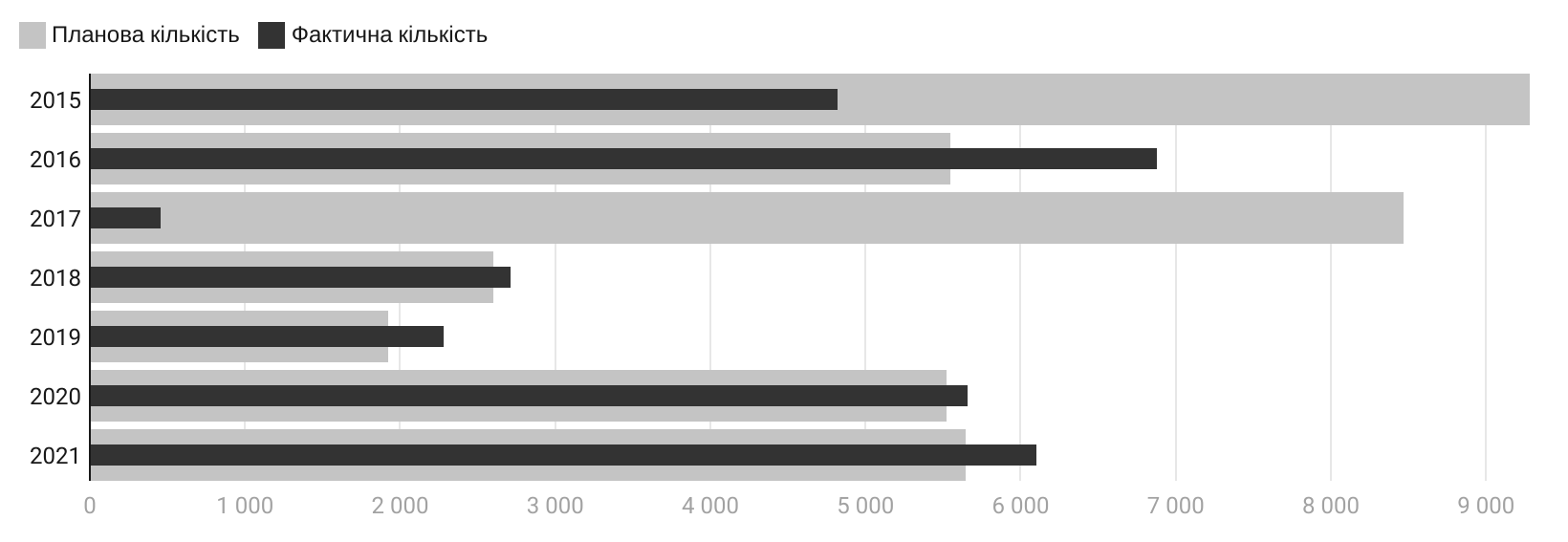Based on the results of a comprehensive study of the portrait of a veteran, we managed to outline the actual portrait of veterans of the Russian-Ukrainian war by conducting a direct survey of veterans. The online survey was conducted among 469 veterans of the Russian-Ukrainian war. The largest number of surveyed veterans are servicemen of the AFU and other military units – 31%. According to the results of the survey, it was found that almost 60% of veterans mobilized for the defense of Ukraine since the beginning of the full-scale invasion of the Russian Federation, but after the victory plan to return to their previous place of work.
According to data published by the Ministry of Veterans Affairs on its website, the total number of persons subject to the provisions of the Law of Ukraine «About the status of war veterans and guarantees of their social protection» reaches 851,068 people. Among them are 438,834 participants of the ATO/OOS hostilities. Thus, according to the results of the survey, the average veteran of the Russian-Ukrainian war is, in the vast majority, a man of young working age – about 30-45 years old, who can be a representative of absolutely any field of employment, but is currently mobilized to the ranks of the AFU or is engaged in volunteering. Although the number of women among veterans has been growing rapidly in recent years, today their share of the total number is about 9%. Taking into account the full-scale armed aggression of the Russian Federation on February 24, 2022, which provoked the mass voluntary mobilization of Ukrainians into the ranks of the AFU, territorial defense and other security forces, we can assume that the number of women among the Defenders of Ukraine and veterans of the Russian-Ukrainian war will only increase in the future. Therefore, it is necessary to apply gender-oriented approaches in the formation of the state policy of social protection of veterans of the Russian-Ukrainian war. The basis for this can be further research into the needs of veterans, both men and women.
Speaking about the actual needs of veterans of the Russian-Ukrainian war, which we managed to analyze based on the results of the survey, it is worth noting that the greatest need of veterans is primarily to meet the needs of relatives and friends, who, according to the survey, especially lack psychological and informational support. In second place, for both veterans and their families, is the need for legal and housing assistance. At the same time, according to the Ministry of Social Policy of Ukraine, as of July 1, 2022, more than 60% of veterans of the Russian-Ukrainian war are recipients of benefits provided for by Ukrainian legislation. Therefore, state programs of free legal and informational and advisory assistance need to be reviewed and improved, in particular with regard to their availability and effectiveness. Having superficially analyzed the needs of the families of veterans of the Russian-Ukrainian war among the Defenders, the need for more thorough research into the needs of the families of veterans and the level of their provision in the conditions of the mobilization of veterans was revealed.
It is worth noting that veterans and their family members need more opportunities to access psychological rehabilitation services than is provided for by the state program, because as can be seen from the research, the request does not correspond to the offer. And in order to promote the popularization of involvement and respectful attitude of society towards veterans of the Russian-Ukrainian war, an information campaign and the opportunity for society to participate in the support and reintegration of war veterans are relevant. Also, the desire of society to be involved in the reintegration of war veterans is evidenced by the data of the online survey of the Ukrainian Veterans Fund, where more than half of the surveyed respondents are ready to provide financial and moral support to veterans.
If we talk about the image of a veteran of the Russian-Ukrainian war in public opinion, it is worth noting that the general ideas are quite different. Thus, according to the Sixteenth sociological survey of the “Rating” group, a third of respondents associate the term “war veteran” with veterans who are fighting now. However, for the other third, it is, first of all, veterans of the Second World War. When interviewees talk about veterans of the Russian-Ukrainian war, the first thing they feel is gratitude and pride. Such data indicate the need to strengthen the information component of the implementation of the social protection policy for veterans, in particular, in the east and south of the country, as well as to pay attention to and adapt the information policy for the target audience among young people.
After analyzing whether the actual portrait of veterans of the Russian-Ukrainian war differs from the image formed in society, it was found that even after 8 years of war, the majority of Ukrainians do not associate veterans with young defenders of Ukraine, participants in ATO/OOS combat operations. In particular, such trends are observed in the vast majority among young people, although about 20% of veterans of the Russian-Ukrainian war are young people under the age of 30. The public opinion of eastern and southern Ukrainians deserves special attention. For further national studies of Ukrainian society’s attitude to veterans, it is very important to analyze the presence or absence of significant changes in the image of a veteran of the Russian-Ukrainian war in the minds of people from the de-occupied territories of Ukraine.
